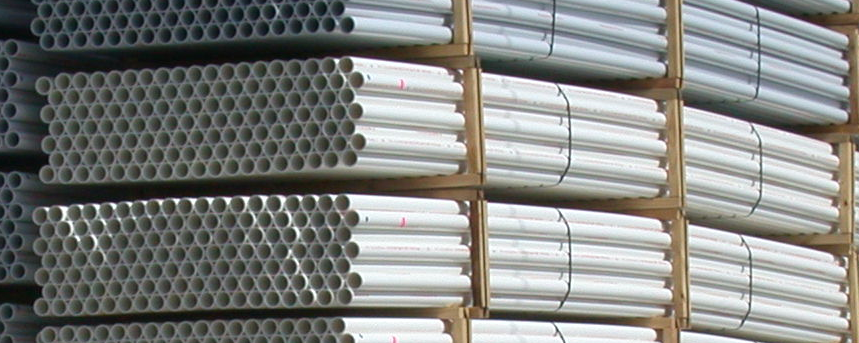Pipe:
Reticluation pipe is generally made out of two types of materials, Polyvinyl chloride (PVC) or Polyethylene (Poly or PE). Both types have their strenghs and weakness. PVC is widely used in domestic situations for main-lines and laterals, whilst Poly is often used to provide micro irrigaton to garden beds. Both pipes are a relatively cheap component of your reticulation system.
Poly pipe comes in a number of densities normally referred to as LDPE or HDPE.
LDPE is the poly pipe you see utilised in garden beds. It is very inexpensive and fittings are barbed and held on by ratchet clamps. Risers and nozzles are pierced directly into the line making it a great value solution. LDPE is generally rated at 300kpa (3 bar). We do not recommend burying LDPE other than under a layer of mulch in a garden bed. It's ability to be pierced is also its weakness. A stray garden fork will easily damage it. LDPE comes in three sizes: 13mm, 19mm and 25mm and can be purchased in rolls from 25m up to 300m. A 25m roll of 13mm pipe will cost around $10.
HDPE is a high density version and is available in metric (blue line) or rural (red line or green line). It can be used under much greater pressure loads and has the ability to be curved if nessesary (depending on size). The Water Corporation use HDPE for mainlines in the street. I recently observed the relaying of water pipes in Adelaide Terrace in Perth city and noted they were using HDPE just at a much larger diameter than we would use in a domestic situation. HDPE can vary in size from 20mm right up to over 2m. Metric HDPE is generally pressure rated from 1000kpa (10 bar) up to 4000kpa (40bar). Rural greenline HDPE is rated at 800kpa and 900kpa for the redline).
HDPE pipe is also relatively cheap, but the fittings are more expensive. It is therefore generally suited for mainline purposes and has the added benefit of being UV tolerant.
PVC is the choice for most domestic reticulation installations. It is capable of maintaining mains level pressure and lasts a long time. It needs to be laid in reasonably straight lines. A gentle curve can be obtained in the lower sizes. PVC pipe needs to be buried as it is not UV tolerant and will deteriorate very quickly when left in the sun. It comes in a range of sizes from 20mm up to around 300mm. It is reasonably priced and the fittings are also affordable. The fittings are connected using a solvent based cement. It is very important that pipe is prepared before being glued by removing any burring and applying primer to remove the shine off the pipe and the fittings.
For domestic situations the main sizes used are 20mm and 25mm. When a bore pump is being used the mainline might be increased to 40mm.
The size of the pipe is determined by calculating the water flow rates of the reticulation system whilst taking into account the pressure available and the pressure loss as the water moves through the system. If these calculations are not done correctly there is a possibility of water hammer occuring, which has a deleterious effect on the pipe and will significantly reduce the life of the system.


